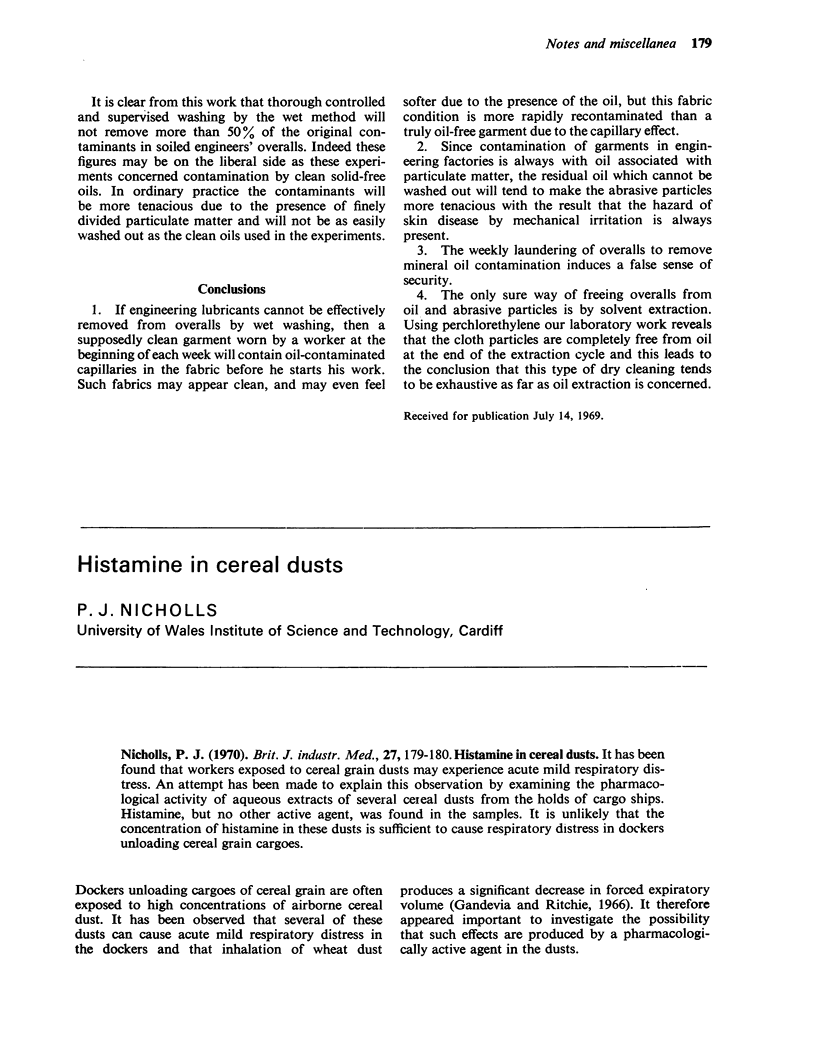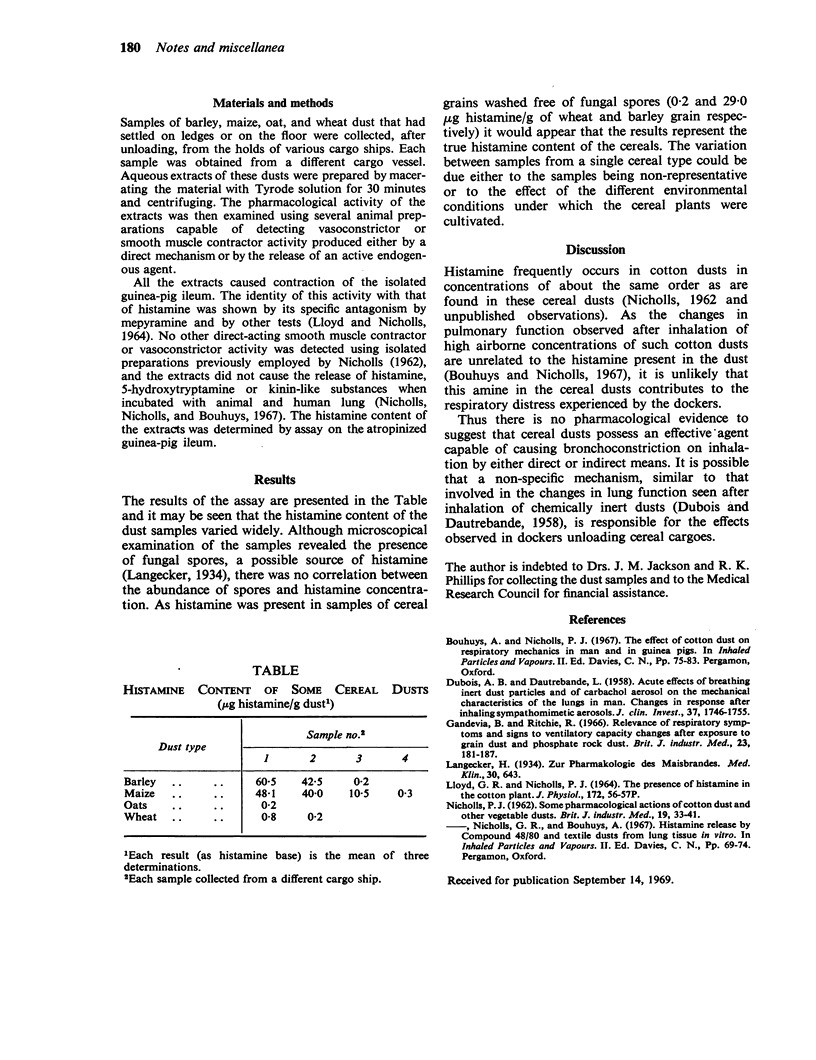Abstract
Nicholls, P. J. (1970).Brit. J. industr. Med.,27, 179-180. Histamine in cereal dusts. It has been found that workers exposed to cereal grain dusts may experience acute mild respiratory distress. An attempt has been made to explain this observation by examining the pharmacological activity of aqueous extracts of several cereal dusts from the holds of cargo ships. Histamine, but no other active agent, was found in the samples. It is unlikely that the concentration of histamine in these dusts is sufficient to cause respiratory distress in dockers unloading cereal grain cargoes.
Full text
PDF

Selected References
These references are in PubMed. This may not be the complete list of references from this article.
- DUBOIS A. B., DAUTREBANDE L. Acute effects of breathing inert dust particles and of carbachol aerosol on the mechanical characteristics of the lungs in man; changes in response after inhaling sympathomimetic aerosols. J Clin Invest. 1958 Dec;37(12):1746–1755. doi: 10.1172/JCI103767. [DOI] [PMC free article] [PubMed] [Google Scholar]
- Gandevia B., Ritchie B. Relevence of respiratory symptoms and signs to ventilatory capacity changes after exposure to grain dust and phosphate rock dust. Br J Ind Med. 1966 Jul;23(3):181–187. doi: 10.1136/oem.23.3.181. [DOI] [PMC free article] [PubMed] [Google Scholar]
- NICHOLLS P. J. Some pharmacological actions of cotton dust and other vegetable dusts. Br J Ind Med. 1962 Jan;19:33–41. doi: 10.1136/oem.19.1.33. [DOI] [PMC free article] [PubMed] [Google Scholar]


